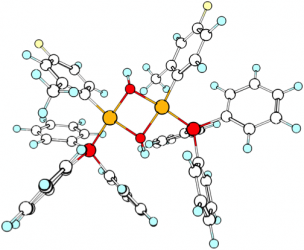
The mechanism of boron-to-nickel transmetalation, the key step of the nickel-catalyzed Suzuki-Miyaura (SM) coupling, was examined both experimentally and theoretically. Dinuclear μ -hydroxo-bridged complexes formed by reaction of trans[ArNi(PR3)2X] with hydroxide are not directly involved in transmetalation, but they rather act as a resting state for the catalyst. The base/boronic acid ratio is the crucial parameter, as it modulates the extent of formation of these dinuclear species and thus tunes the catalytic activity. These findings explain some limitations encountered in practical applications of nickel-catalyzed S-M couplings and suggest how to tailor the experimental conditions in order to overcome these difficulties.

Pour plus d’information, consultez le communiqué de presse associé à cet article : Rationaliser une catalyse au nickel entre théorie et expérience !
References:
Taming Nickel-Catalyzed Suzuki-Miyaura Coupling: A Mechanistic Focus on Boron-to-Nickel Transmetalation
Pierre-Adrien Payard, Luca Alessandro Perego, Ilaria Ciofini, and Laurence Grimaud*
ACS Catal. 2018, 8, 4812−4823
DOI: 10.1021/acscatal.8b00933
Taming Nickel-Catalyzed Suzuki-Miyaura Coupling: A Mechanistic Focus on Boron-to-Nickel Transmetalation
